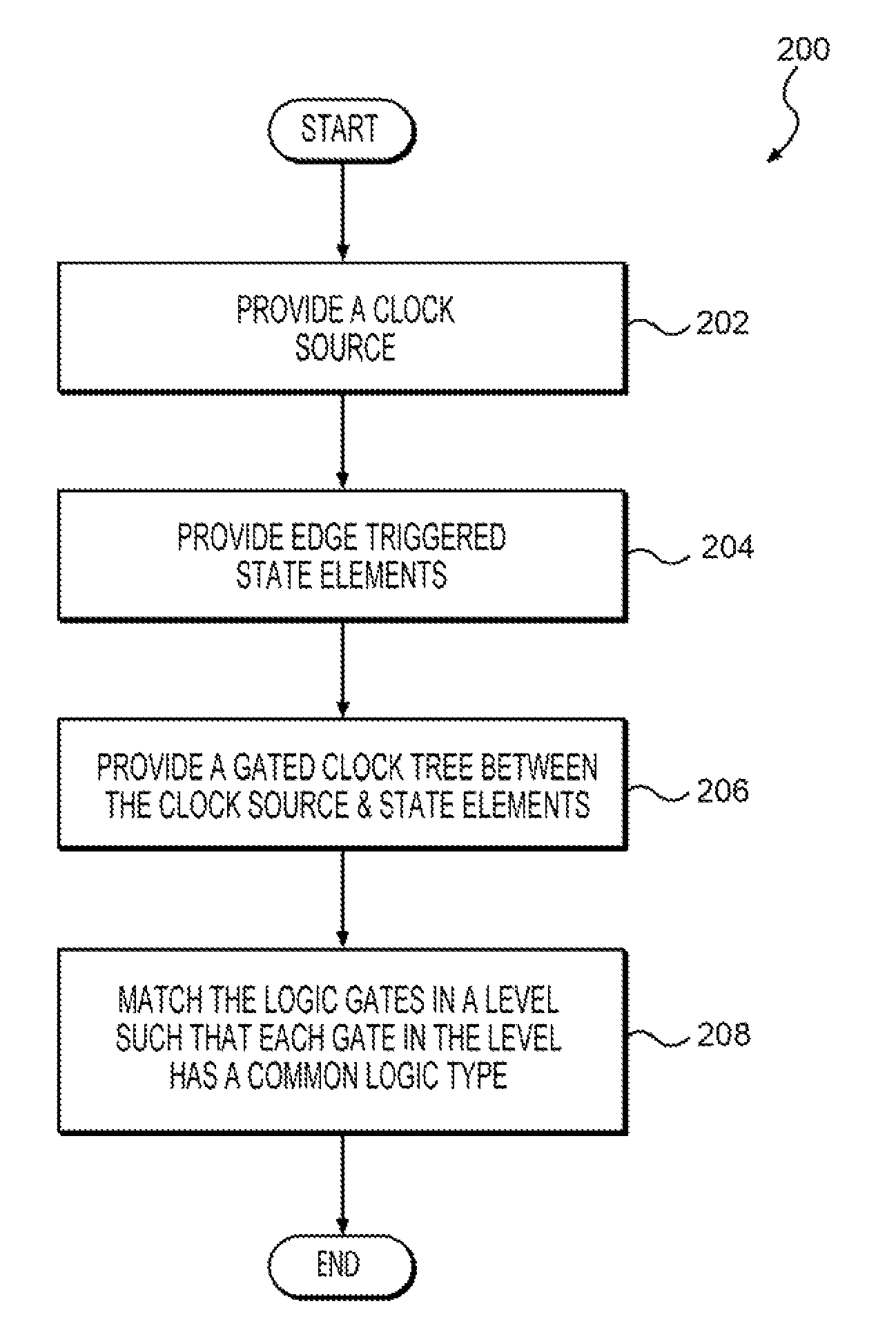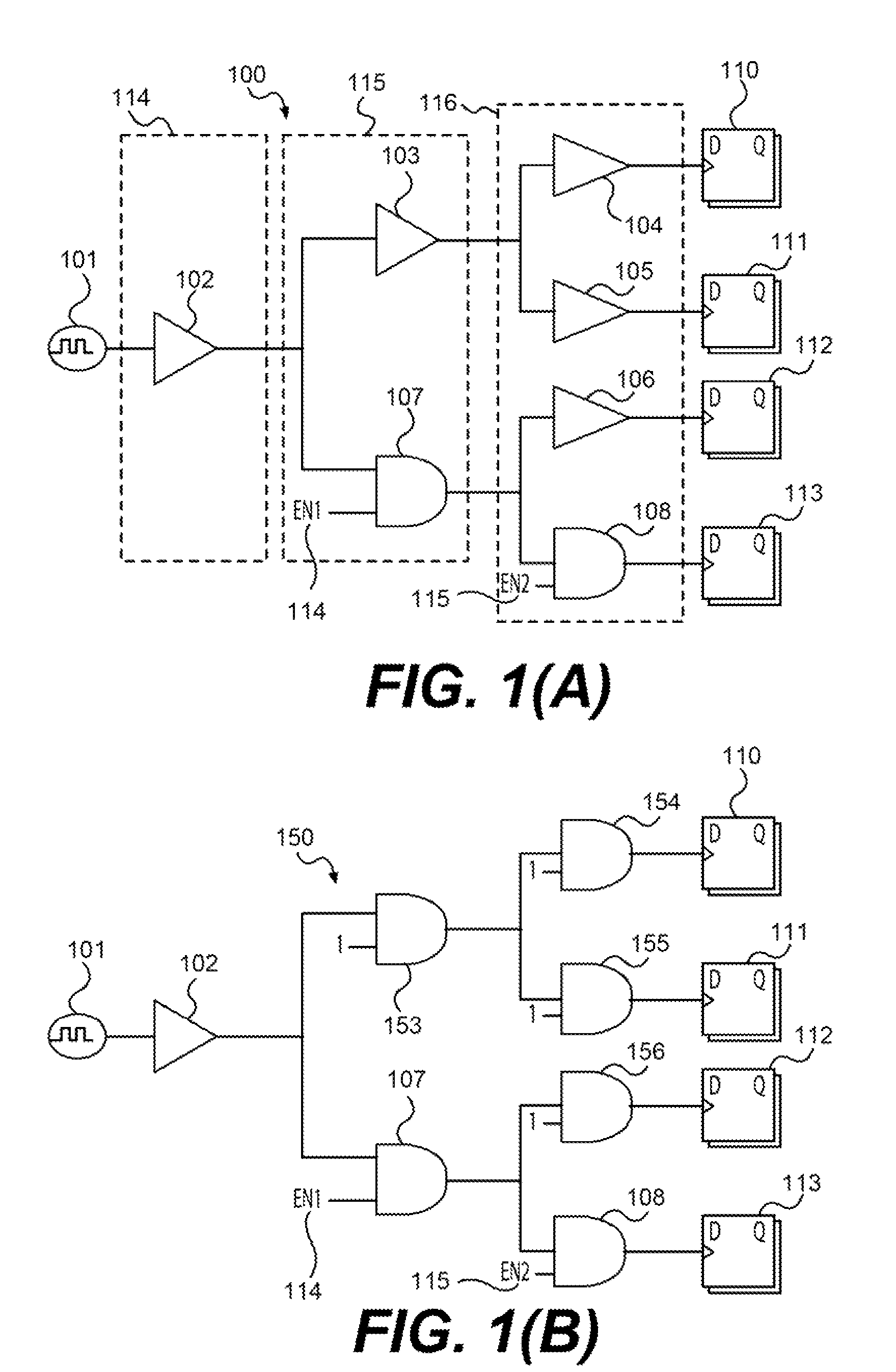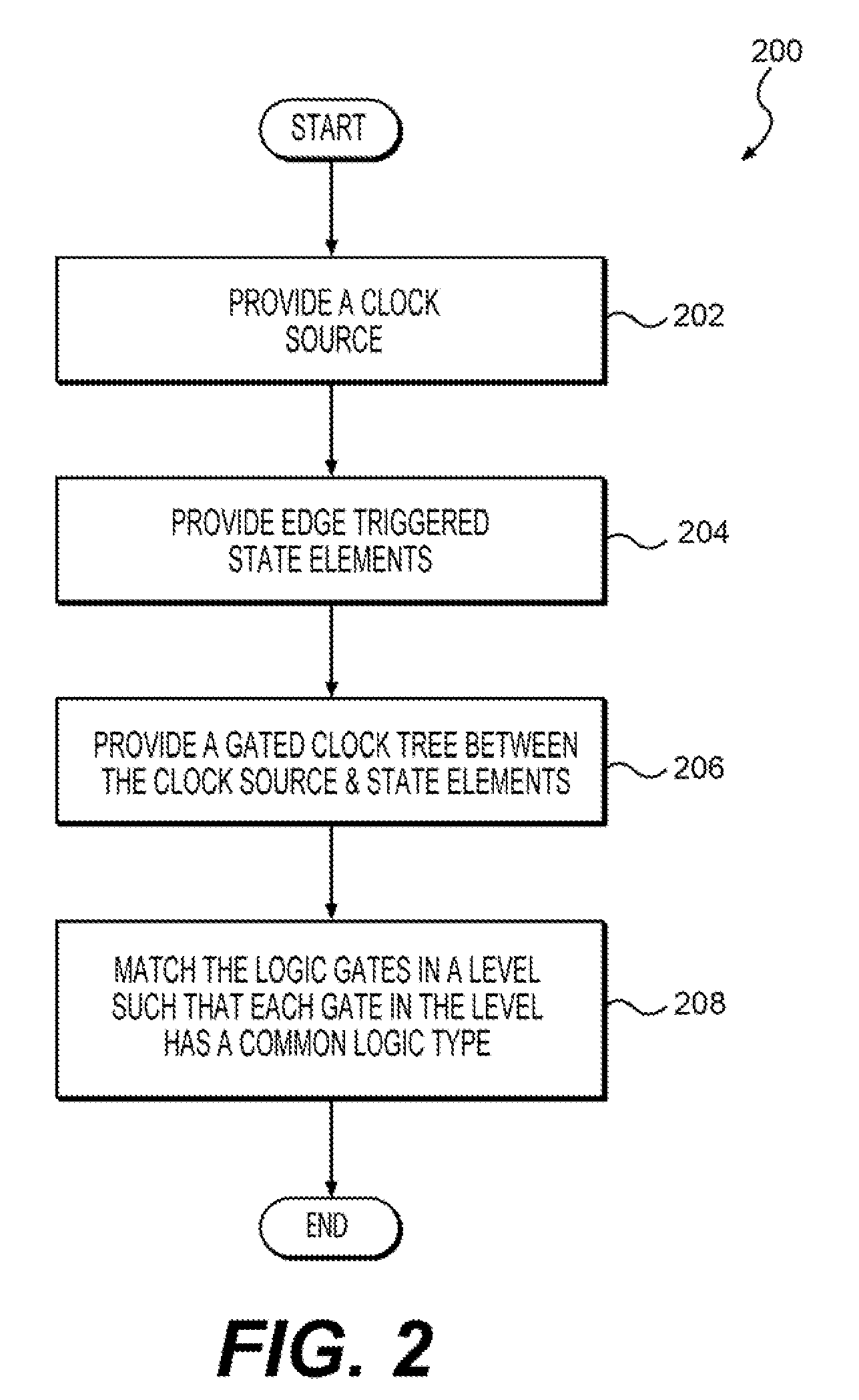Methods and systems for reducing clock skew in a gated clock tree
a clock tree and gated clock technology, applied in the field of systems and methods for reducing clock skew in synchronous digital systems, can solve the problems of inability to address the major source of clock skew, and inability to address the conventional method
- Summary
- Abstract
- Description
- Claims
- Application Information
AI Technical Summary
Benefits of technology
Problems solved by technology
Method used
Image
Examples
Embodiment Construction
[0026]The following detailed description refers to the accompanying drawings. Where the same reference numbers are used in the drawings and the following description such reference numbers refer to the same or similar components or processes. While several exemplary versions and aspects of the invention are described herein, modifications, adaptations and other implementations are possible without departing from the spirit and scope of the invention. For example, substitutions, additions and / or modifications may be made to the components illustrated in the drawings, and the exemplary methods described herein may be modified by substituting, reordering, or adding steps to the disclosed methods. Accordingly, the following detailed description does not limit the invention Instead, the proper scope of the invention is defined by the appended claims.
[0027]The present description relates to systems and methods for synthesizing a gated clock tree with reduced clock skew. More specifically,...
PUM
 Login to View More
Login to View More Abstract
Description
Claims
Application Information
 Login to View More
Login to View More - R&D
- Intellectual Property
- Life Sciences
- Materials
- Tech Scout
- Unparalleled Data Quality
- Higher Quality Content
- 60% Fewer Hallucinations
Browse by: Latest US Patents, China's latest patents, Technical Efficacy Thesaurus, Application Domain, Technology Topic, Popular Technical Reports.
© 2025 PatSnap. All rights reserved.Legal|Privacy policy|Modern Slavery Act Transparency Statement|Sitemap|About US| Contact US: help@patsnap.com



